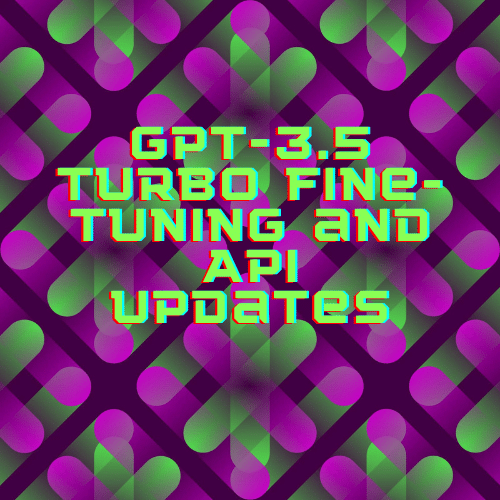The world of artificial intelligence is no stranger to rapid advancements and breakthroughs. Among the frontrunners in this technological race, OpenAI has consistently showcased its prowess, and the latest updates to the GPT-3.5 Turbo model are no exception. With the unveiling of fine-tuning capabilities, the horizon of AI customization has expanded, promising a more nuanced and tailored experience for users.
OpenAI’s GPT-3.5 Turbo: The Magic Behind Fine-Tuning
The essence of fine-tuning lies in its ability to refine and adapt. Imagine having a tool that’s already powerful and then being given the chance to mold it further to your specific needs. That’s precisely what OpenAI offers with its GPT-3.5 Turbo model. This feature has been a beacon for developers, illuminating new possibilities and potentials.
OpenAI’s GPT-3.5 Turbo, developers now have the autonomy to:
Steer with Precision: The model can be trained to follow instructions to the letter. Whether it’s generating concise responses or ensuring that it always communicates in French or Spanish, the model’s steerability is a game-changer.
Consistency in Output: In the digital world, consistency is key. With fine-tuning, developers can ensure that the model’s responses follow a specific format, be it for code snippets or API calls.
Crafting the Perfect Tone: Every brand has its voice, its unique way of communicating. Fine-tuning allows this voice to resonate in the model’s outputs, ensuring that every interaction aligns with the brand’s identity.
What’s even more impressive is the efficiency that comes with fine-tuning. Early adopters have reported significant reductions in prompt sizes, leading to faster API interactions and substantial cost savings.

Safety First: OpenAI’s Commitment to Responsible AI
In the race to innovate, safety can often take a backseat. However, OpenAI has been unwavering in its commitment to ensuring that its technologies are deployed responsibly. Every piece of data used for fine-tuning is meticulously scrutinized through the Moderation API and a robust GPT-4 powered moderation system. This rigorous process ensures that the training data aligns with OpenAI’s high safety and ethical standards.
OpenAI’s GPT-3.5 Turbo: Demystifying the Costs of Fine-Tuning
Transparency is a virtue, especially when it comes to costs. OpenAI has provided a clear breakdown of the expenses associated with fine-tuning:
Training comes at $0.008 per 1K Tokens.
Usage Input is priced at $0.012 per 1K Tokens.
Usage Output stands at $0.016 per 1K Tokens.
To give a clearer picture, if a developer were to undertake a GPT-3.5 Turbo fine-tuning project with a training file of 100,000 tokens, the cost would be around the ballpark of $2.40. Considering the customization and efficiency gains, it’s a small price to pay.
OpenAI’s GPT-3.5 Turbo: Peeking into the Future
OpenAI is not one to rest on its laurels. The company has hinted at further enhancements, including the introduction of a user-friendly fine-tuning UI. This interface promises to streamline the fine-tuning process, offering developers a more intuitive experience.
Furthermore, OpenAI has rolled out updated versions of its GPT-3 models, namely babbage-002 and davinci-002. These models come with the capability to be fine-tuned, providing developers with even more flexibility in their AI endeavors.
OpenAI’s GPT-3.5 Turbo: A New Dawn in AI Customization
The introduction of fine-tuning to the GPT-3.5 Turbo model is more than just a feature update; it’s a paradigm shift. It signifies a move towards a more personalized AI, where developers and businesses can truly make the technology their own. As we stand on the cusp of this new era, the possibilities seem endless, and the future, incredibly exciting.




